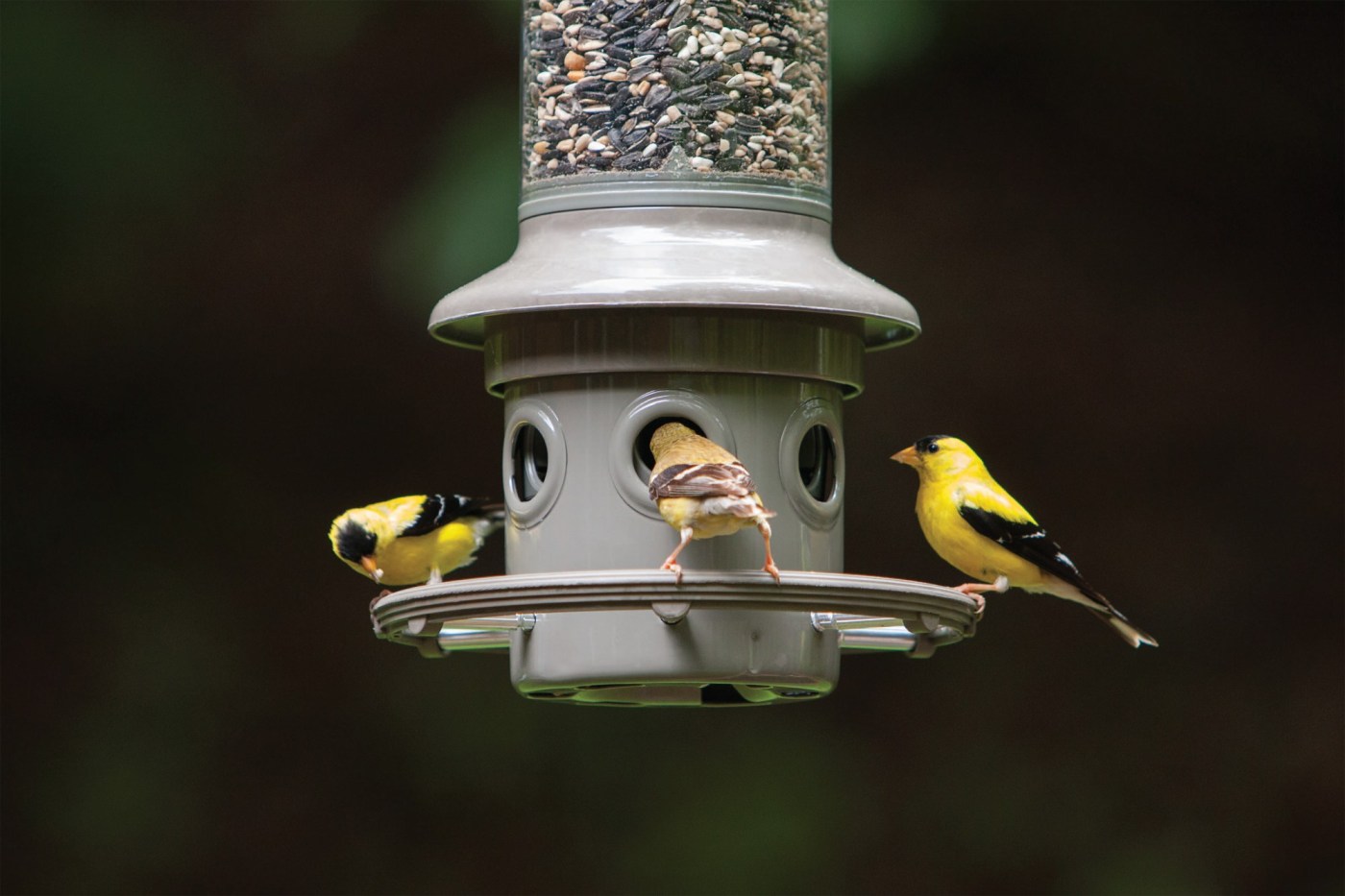Attracting birds is fun and educational. There’s no easier way to become more aware of the diversity of birds that surrounds us than to put out a backyard feeder and simply glance at it from time to time. No trekking into the hills or lugging a spotting scope to the shore is required — the birds simply appear outside your window, changing with the seasons. But many people are discouraged from feeding birds by fears of squirrels — or raccoons, rats or mice — eating the food intended only for the ones with wings. You don’t need to be. There are lots of ways to attract birds— and only birds.
Related Articles
Thar they blow! An abundance of whales near Bay Area beaches
South Bay 16-year-olds turn old clothes into new dog toys
Can anything be done about my cat that aims too high in the litter box?
10 newborn puppies tossed out of car near California animal shelter are reunited with their mother
Napa is getting a huge new sculpture devoted to birdwatching
A brief opening disclaimer on behalf of messy and undefended bird feeders is in order: No bird feeder actually creates a population of squirrels or rodents out of nowhere. Instead, what bird feeders have the potential to do is to make our already existing populations of animals — whether birds or mammals — more visible. The biggest determinant of the size of a yard’s rodent population is the availability of suitable habitat. Eliminating access to shelter in buildings, crawlspaces or brush piles, and reducing the amount of ivy and other low ground covers will be far more effective at preventing an excessive rodent population than taking down a bird feeder while leaving all of those bigger factors unaddressed.
That being said, there’s no reason that your bird-attracting endeavors need to be accessible to every four-legged creature that comes along. First, a number of ways of attracting birds are essentially never problematic from a squirrel and rodent perspective: Mammals mostly ignore hummingbird feeders, birdbaths and birdhouses. These three means of attracting birds are inherently low-mess, of limited interest to mammals and rarely cause any issues.
Attract woodpeckers and more with squirrel-deterring hot pepper suet. (Courtesy of Wild Birds Unlimited)
There are other foods that can be offered to birds that are of little to no interest to mammals. White millet can be offered to ground-feeding birds like sparrows, towhees, doves and quail, while safflower can be offered in hanging feeders for house finches, titmice, chickadees and more —squirrels usually leave these alone. Nyjer can be offered to finches and siskins — squirrels and rodents generally dislike it. For the adventurous, mealworms can be put out to entice insect-eating birds like bluebirds and a variety of other species, without attracting the attention of the four-legged. One of the most flexible options are foods with added hot pepper, which discourages the taste-sensitive mammals without affecting birds. Spicy versions of suet cakes or loose seed mixes can easily be substituted for standard bird foods.
Another easy-to-implement option is to use a squirrel-proof seed feeder. These come in two main varieties: feeders with a weight-sensitive spring mechanism that closes off access to the food when heavier animals climb aboard, and feeders with an outer cage that only small songbirds can fit inside. Both can be good choices, depending on what you are trying to exclude. Weight-sensitive feeders will exclude squirrels, rats and large birds like pigeons or crows, but will generally allow medium-sized birds like jays or blackbirds to feed. Caged feeders will exclude squirrels and those medium-sized birds, but are not reliable defenses against smaller rodents.
The best option of all is to construct a squirrel-proof feeding station. What this usually looks like is a free-standing pole with one or more arms for hanging feeders and also featuring a “baffle,” a metal disc that wraps around the pole to prevent mammals from climbing to the feeders. For this method to be successful, you need to have a clear space around the pole: an overhanging tree branch, for instance, will allow squirrels an alternative route to the feeders that compromises the effectiveness of the baffle. But if you have such a location, this kind of solution is ideal, as it gives you the freedom to offer an array of whatever kinds of food you wish, in whatever feeders you wish, without having to consider how squirrel-proof each one is individually. Of course, it is still wise to choose low-mess foods like shelled sunflower seeds, suet and hummingbird feeders to avoid leaving edible remnants on the ground beneath the pole.
Have you seen the orioles and grosbeaks currently passing through your yards? Do you know the crowned sparrows, arriving next month? Put out appropriate feeders and you can — without ever leaving home.
Jack Gedney’s On the Wing runs every other Monday. He is a co-owner of Wild Birds Unlimited in Novato and author of “The Private Lives of Public Birds.” You can reach him at jack@natureinnovato.com.












